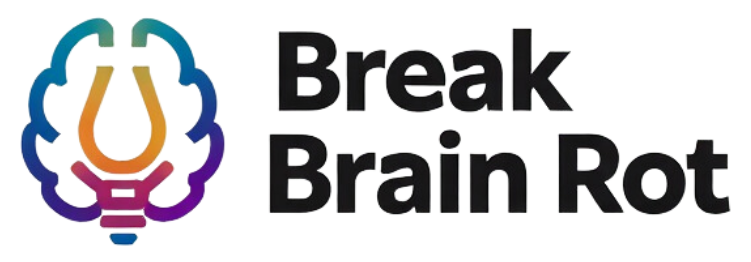Table of Contents
- What is Doomscrolling?
- The Psychology Behind Doomscrolling
- Mental Health Implications
- Breaking the Doomscrolling Cycle
- Digital Detox Tips to Reclaim Your Focus
- FAQs
- Conclusion
What is Doomscrolling?
Definition and Origins of the Term
Doomscrolling refers to the tendency to continuously scroll through endless streams of bad news, especially during uncertain times. The term gained traction in the late 2010s and was officially recognized by Merriam-Webster, particularly during the COVID-19 pandemic.
How Doomscrolling Differs from Casual Browsing
While casual browsing is often balanced with positive or neutral information, doomscrolling zeroes in on negative content, creating a loop that feeds anxiety and fear. It’s not entertainment—it’s a compulsion.
Why It Became More Popular in Crisis Periods
Crisis periods—be it a global pandemic, political unrest, or economic instability—trigger heightened uncertainty. People turn to their devices to seek answers, reassurance, or updates, but algorithms frequently feed them negative content. This tendency has been amplified as seen in the history of internet habits.

The Psychology Behind Doomscrolling
Neuroscience of Negative Information Bias
Our brains are wired to detect threats, and negative news often triggers stronger emotional responses than positive news. This phenomenon, known as negativity bias, makes it harder to turn away from distressing updates. The American Psychological Association notes that constant exposure to negativity can have lasting mental health effects.
Social Media Algorithms and Reinforcement Loops
Social platforms reward engagement. When you click on a troubling headline, algorithms serve you similar content, creating a reinforcement loop. This neural reward system becomes addictive, as explained in our guide on how social media affects the brain.
Fear of Missing Out (FOMO) and Anxiety-Driven Behavior
FOMO fuels doomscrolling. You don’t want to be uninformed when everyone’s discussing the latest shocking headline. This anxiety leads to repetitive checking, which can spiral into compulsion.
Mental Health Implications
Increased Anxiety and Stress Levels
The constant barrage of negative news elevates cortisol—the stress hormone—which can increase restlessness and impact mood. Learn more in our article on signs of social media burnout.
Sleep Disruption and Cognitive Fatigue
Doomscrolling before bed disrupts your body’s natural sleep-wake cycle. Blue light exposure delays melatonin production, while distressing content keeps the mind alert, leading to poor-quality rest.
Impact on Productivity and Emotional Well-being
Prolonged exposure to negativity can reduce focus, sap motivation, and impair decision-making. According to the National Institute of Mental Health, chronic stress can also contribute to emotional exhaustion.
Breaking the Doomscrolling Cycle
Awareness and Self-Monitoring Habits
The first step is recognizing your doomscrolling patterns. Keep a log of when and why you check the news and note how you feel afterward.
Setting Boundaries with Tech Use
Use app timers and schedule specific “check-in” periods for social media and news. Small steps can lead to big changes in your digital habits.
Replacing the Habit with Healthier Alternatives
Instead of scrolling, engage in activities like journaling, exercising, or reading uplifting material. See our tips on how to build healthy screen time habits for practical strategies.
Digital Detox Tips to Reclaim Your Focus
Discover Simple Digital Detox Tips to Unplug, Reduce Stress, and Boost Focus
Start by identifying triggers, removing distracting apps, and practicing mindful media consumption. Replace screen time with offline hobbies to reduce dependency on your phone.
Establishing “No-Phone” Zones in Your Home
Create screen-free areas like the bedroom or dining room. This helps reduce mindless scrolling and encourages more face-to-face interactions.
Using Apps to Track and Limit Usage
Apps like Digital Wellbeing or Screen Time can reveal daily habits and let you set limits. For more structured approaches, see our beginner’s guide to digital detox and explore tools from the Center for Humane Technology.
Frequently Asked Questions
What causes doomscrolling and why is it addictive?
It’s driven by negativity bias, algorithmic reinforcement, and anxiety. The reward systems in our brain promote repetitive behavior, making it addictive.
Can doomscrolling have long-term effects on mental health?
Yes. Prolonged exposure to distressing news can lead to chronic stress, anxiety disorders, and even depression.
What are some quick ways to stop doomscrolling without going offline completely?
Set specific time limits, unfollow triggering accounts, and balance your feed with positive content.
How does doomscrolling affect sleep?
Blue light and emotional stimulation before bed delay sleep onset and reduce rest quality.
Is doomscrolling the same as staying informed?
No. Staying informed is intentional and limited, while doomscrolling is excessive, compulsive, and often distressing.
Conclusion
Doomscrolling is a modern trap fueled by technology, human psychology, and our innate draw to negative information. By recognizing the signs, understanding its effects, and applying proven strategies, you can reclaim control over your attention. Remember—healthy tech habits aren’t about cutting off completely; they’re about creating balance. Discover simple digital detox tips to unplug, reduce stress, and boost focus. Start your journey to balance and well-being with these easy steps today. Begin with just one mindful adjustment, and you’ll be surprised at how quickly your mental clarity and emotional resilience improve. It’s time to scroll less and live more.

